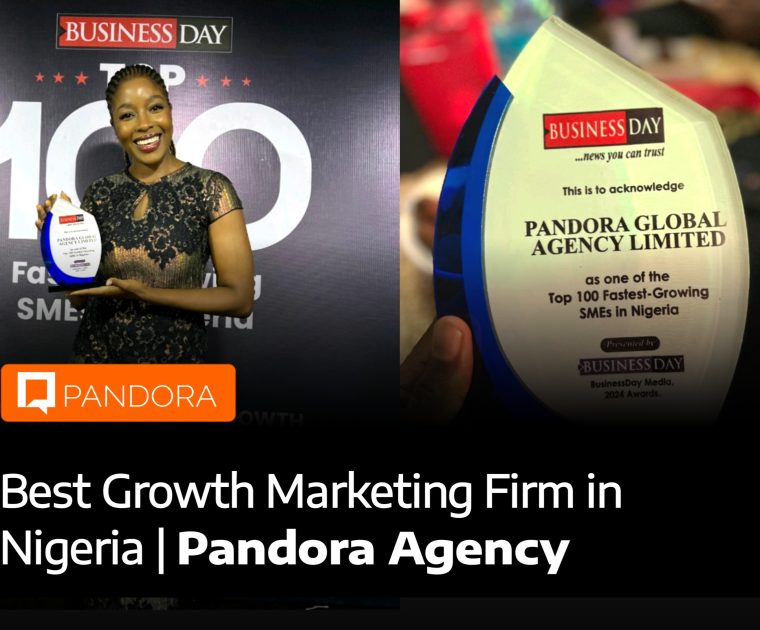Why do many Businesses lack a strong brand identity? They focus on the “standard elements of a brand”.
When Steve Jobs and Wozniak needed a name for their company, they settled for Apple. It sounded nothing techy. Instead, it came off as fun, spirited, and nothing intimidating. They went for something that took the edge off the word ‘computer.’ And it did get them ahead of competition in the phone book.
Their approach to building the brand is centered on identifying needs and creating products that solve those needs in the simplest, most approachable way. One thousand songs in your pocket easily comes to mind.
Every entrepreneur dreams of creating a strong brand like Apple, from choosing a unique name and tagline to selecting visual representation and messaging. And there is a vast amount of information in branding and consumer behavior to help achieve that. Yet, these haven’t proved very effective in producing super brands. One reason is that branding experts consistently focus on the ‘standard’ elements, and rarely rethink their approaches.
Every brand element is a message, but instead of focusing on those that meet the needs, decision makers create brand guidelines that overlook basic elements that can make their brands stand out.
These elements are brand scent, brand sound, brand touch, brand taste, brand experience, brand values, and brand story.
Want Your Business to Stand Out From the Crowd? Download Our Free Brand Guidelines Template Now
7 Hidden Brand Identity Elements for Building a Strong Brand
Let’s take a look at these hidden brand identity elements and how they can help you build a strong brand image and stand out from the crowd:
1. Brand Scent Improves Brand Identity
Scent marketing is the idea of incorporating scent in all the touchpoints of your customer experience. Unlike a logo or product which everybody can see the same way, brand scent is a subconscious effort and people can perceive it in different ways.
One of the earliest brands to incorporate brand scent in its marketing efforts is the clothing company, Abercrombie & Fitch. Its recent Ellwood fragrance has become its signature scent associated with the brand.
Research shows that shoppers in scented environments may linger longer and are willing to pay more for products.
A distinctive scent associated with your brand can create a memorable sensory experience for your customers. For example, a coffee shop might have a roasty signature aroma that customers associate with comfort and relaxation.
So if you operate a personal care brand, food and beverage, or even hospitality, carefully selecting and using a unique scent can create memorable and immersive experiences for your customers.
2. Brand Sound Creates Memorable Experience
Brand sounds usually come as sound logos which represent a brand through a short melody of a few notes. They can be tailored to suit the environment, platform, and communication goals of a company. Think of iconic McDonalds “I’m lovin It” jingle or Intel’s iconic four-note “bong”.
MacDonald’s for instance, used its brand sound to make a comeback after its declining revenue in the early 2000s. Combined with the I’m loving It line, the brand sound started a global campaign that was translated into multiple languages and thousands of audio mixes.
While you may not afford an elaborate jingle and soundtrack like McDonalds, you can create a simple brand sound signature or a specific voiceover style that is associated with your brand.
For example, if you’re a tech startup, you might go for a futuristic sound effect while a boutique clothing store can use a soft, elegant voiceover to stand out and remain memorable.
3. Brand Touch Enhances Brand Identity
It’s not always easy to define your brand personality. However, this is what determines how your product is perceived. This is where brand touch comes in. Brand touch is the differentiating physical sensation associated with your brand.
For example, the brand touch of a luxury fashion house could be the use of high-quality materials that feel luxurious to the touch. To enhance your brand identity as a business owner, you can reflect brand touch in your product design and materials, packaging designs, physical store design, and customer service.
4. Brand Taste Sets You Apart
Brand taste can boast the identity of brands in the food and beverage industry. Having a unique taste profile can make you stand out amidst the crowd. For example, a craft beer tastes differently from a commercial beer. If you want to go into beer production for instance, you might want to differentiate your brand with taste.
Generally, if you operate in the food and beverage industry, you can boost brand identity by developing a unique flavor profile, maintaining that flavor, and highlighting unique ingredients. Instead of aspiring for your brand to taste like existing products, seek out unique flavors that’ll meet the needs of specific consumers.
5. Brand Experience Connects with the Audience
Brand experience is the overall perception that customers have when interacting with your business. If you’ve ever been to a Nike store, you’ll attest to what it means to be motivated and empowered.
The stores are designed to be inviting and interactive, giving customers a unique immersive experience. Customers can get personalized fittings and products that cater to their specific needs.
Their in-store events such as product launches, athlete meet-and-greets, workshops, fitness classes, and sports-themed activities help them connect with customers in a unique way.
In addition, Nike marketing campaigns are known to feature stories of athletes overcoming challenges and achieving their goals. One of such featured Neymar Jr. overcoming obstacles and pushing himself to new heights.
While small businesses may not have the budget to offer the sort of customer experiences done by big brands like Nike, you can build strong relationships with your customers by providing a genuine and personalized experience, such as offering tailored recommendations, remembering their preferences, and going the extra mile to meet their needs.
You can also leverage your unique stories and values to create a strong brand identity that resonates with your target audience. For example, if you run a local yogurt company in Nigeria, you can emphasize your commitment to using organic, locally sourced ingredients and supporting local farmers. This story will resonate with customers who value community, local economic growth, and sustainability.
6. Brand Values Show Your Customers Who You Are
Brand values are the principles and standards that are internalized in your business. They include the ethics and moral codes that guide everything you do as a company. For example, at Pandora Agency Ltd., our core values are transparency, integrity, innovation, and excellence.
These values are deeply ingrained in everything we do. They are authentic to us, relatable to our customers, and inspiring to our audience.
As a business owner, you need to establish your brand values early enough and ensure that they guide every aspect of your operation and team.
7. Brand Story Builds Emotional Connection
A brand story tells why your brand exists, the inspiration behind it, and how your product or service contributes to the world. It helps customers understand who you are, connect with you, and become loyal customers.
As a business owner, you need an honest and compelling brand story that can help you connect with your audience on an emotional level. This story should be unique, memorable, and aligned with your brand’s values.
One example that comes to mind is the story of the Nigerian streetwear fashion brand, David Blackmoore. The designers grew up in Nigeria, (a third world country) where most resources are being exported and less emphasis is shed on where they come from. They decided to make a brand that keeps the Nigerian streetwear industry fully represented on the global market. Their story resonated with a huge audience both home and abroad, including Nigerian celebrities.
Brand Identity vs Brand Image: What’s the Difference?
A brand identity is what you intentionally decide your company stands for. A brand image is what consumers believe your brand represents. It is what people believe about your brand and not what you tell them to believe.
As a brand, you can claim to be customer-centric, quality-oriented, and eco-friendly. That is your projected brand identity. But, in the store your employees are rude, your products are substandard, and your sourcing process has nothing to do with sustainability. If your company gets a high reputation of being uncaring; offering low-quality products, and engaging in unethical sourcing, then that is your brand image!
So, while it is important to set brand identity that reflects who you are and what you want to be identified with, it is crucial to back it up with actions that align with your claims which in turn creates a positive image of your brand among consumers.
Brand Identity Examples
1. Origin
Authenticity and elevated lifestyle, Origin’s visual identity makes you fall in love. They splash their cans and bottles with colorful leafy and root-like designs on dark backgrounds. This is a cultural identity that is rooted in African traditions and heritage. Their packaging, advertising, and events all celebrate African culture and music.
2. UBA
One of Africa’s long-standing banks, UBA posits itself as “…techno-centric, connected, confident, and engaging.” The brand has a modern, sophisticated, and professional brand identity, from its logo and website, to its marketing materials.
3.Apple
Apple is known for its minimalist design aesthetic and focus on innovation. The brand’s clean lines, white backgrounds, and emphasis on simplicity have become synonymous with Apple.
4. Emirates
Reading “Emirates”, probably evokes a connection to roots in the oil rich UAE. However, its switch from “Fly Emirates” to “Hello Tomorrow” has come to position it as a global lifestyle brand. It has a luxurious and opulent brand identity. You can see this in the stunning imagery of global destinations and emphasis on comfort, luxury, and exceptional service displayed in its advertising.
5. Coca-Cola
Coca-Cola has a timeless and classic brand identity that has made it one of the most recognizable brands in the world. The brand’s iconic red can, distinctive logo, and catchy slogans, have made it a cultural touchstone.
In sum, to build a strong brand identity, you need to combine both the standard brand elements such as logos and taglines and the hidden ones such as brand scent, sound, taste, values, and experience. With this, you’ll be able to stay ahead of competition and build a profitable brand.






Leave a Reply